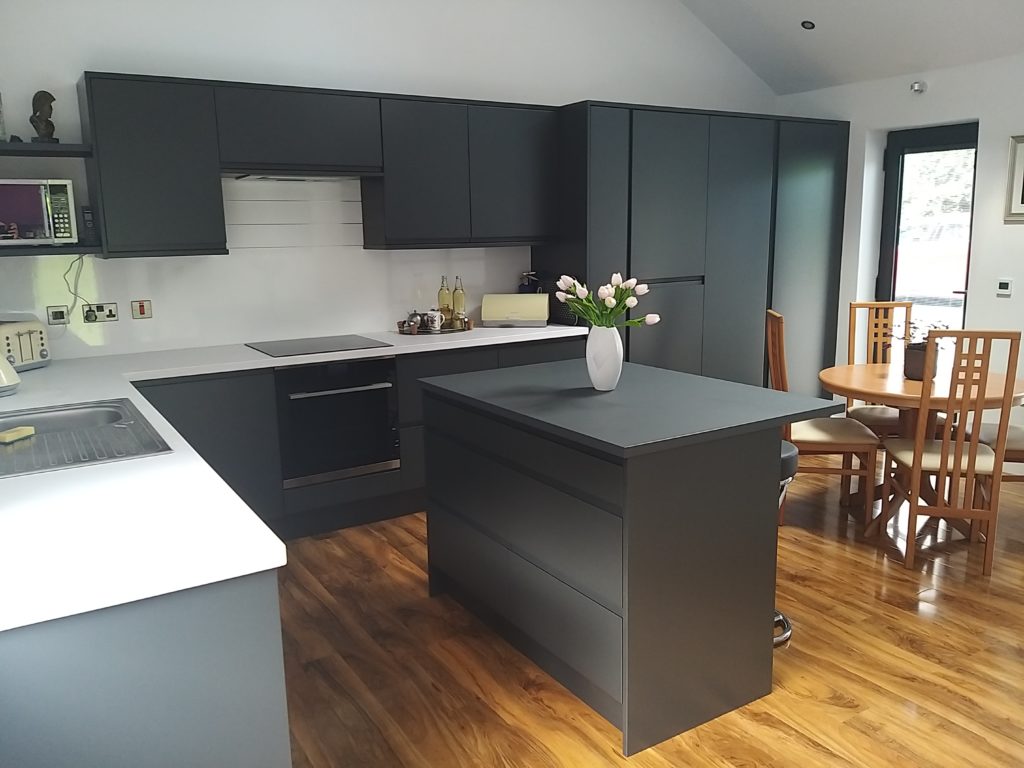
Converting a detached garage into a granny flat or an annexe is certainly possible in the UK, but it does come with a few caveats and considerations which need to be addressed before you go out and do it.
Generally, the main point to address comes from the change of use of an outbuilding in the case of a detached garage. Internal or attached garages tend to get away with using permitted developments and just replace the garage door with a wall & window, but for converting a detached garage into an annexe, the rules are slightly stricter.
Planning Permission for converting a detached garage into a granny flat/annexe
The biggest area of concern for converting a detached garage into a granny flat or annexe is the planning requirements that are behind it. Generally speaking, to change the use of a detached garage into a habitable space (which is a space that has sleeping, washing and/or cooking facilities), you’ll need planning permission. That’s almost always the case. In some cases even more rarely, you’ll actually have a stipulation in the property details that the garage must remain usable for parking and can’t be changed at all.
The good news in this case however is that the Planning Authority is supposed to heavily promote multi-generational living. It’s in the planning policy that all local planning offices have to adapt their regulations to, and it should mean that things should be relatively easy for you so long as the general requirements for planning permission are met. An architect or architectural professional should be able to tell you more here.

Building Control Requirements for an external Granny Flat/Annexe
Converting any space into a habitable location, like a granny flat or annexe, will need the space to be subject to building control requirements. Building regulations drawings will help to determine what all of this will look like as well as give it the highest chance of approval, but without it, the flat or annexe will not be legal.
Some of the biggest areas of building regulations that apply to where you can or can’t convert your detached garage into a granny flat or annexe come from things like the insulation of the structure (which will likely need to be improved dramatically), as well as things like heat and light in general, access to facilities, fire safety, drainage and how deep it can be made for connection, and much more too.
More Things to Consider:
Even on top of the planning and building regulations requirements that need careful thought to consider converting your detached garage to a granny flat, other less legal but more logical and practical things need to be throughout about either in the design process or even the thought process before you make it happen.
Just a few of these things are:
Facility Requirements
In addition to the facility requirements looked at throughout the building regulations process, there are even more facilities that may be needed for your granny flat or annexe to be successful. The appliances you’re able to fit inside, for example, are prime examples, as are things like seating areas, and other generic factors too.
For many people, there may also be disability and accessibility orientated considerations that need even more thought still. This could be larger spaces for walking frames, wheelchair access, walk-in showers/wet rooms, the list goes on. Make sure this information is conveyed to your designer and they should be able to help you create a much more successful finished product that will be effective for years to come.
Conservation status
In addition to the general planning framework that applies to converting detached garages into a granny flat or annexe, there’s also the added consideration of your property in particular. Houses all over the UK can find themselves in conservation areas or on green belts, and this can have a major impact on what is and isn’t available to your project.
You may need a specialist planning application in some cases or face more specific challenges that you may not already be aware of. All planning authorities have different views on these types of situations, so speaking to an architect is a big help here too.
Practicality
Finally, you have the simple fact of considering the practicality of what your finished granny annexe will have to offer whoever uses it. You need to think about how much space you’ll have available to work with, the condition of the structure you already have, the possibilities or potential to add to the structure, the layout and design possibilities, and what you’ll use for parking too in some cases. There’s also the fact that privacy and window use might cause problems too.
Single garages won’t have enough space for an annexe/granny flat in most cases. Annexes need to have a food prep facility, bedroom with ensuite, and of course just general living space to be properly enjoyed. Think about how it might work with the rest of your property and what your long-term plans are for the annexe and its use.

The Detached Garage Conversion Process
The process that goes into converting a garage to become an annexe is largely similar to other construction projects. Nevertheless, it’s always useful to get a rough outline of the process and what you can expect during it.
Step 1. Get Designs done – Around £1000-£1200
The first step in the process of converting your garage is to have it designed. Having designs helps you to get a better idea of what the space will look like and what the options are before any work is done.
These can factor in what is going to be required by the required authorities in the later steps, and show you an overall view of what your project will or could look like and give you the options to really make it your own too.
Step 2. Planning Process – £500-£800
The planning process will comprise of two parts. Firstly, you need to have planning drawings created, factoring in all relevant areas of the planning framework and put them in a format ready for submission.
Secondly is the submission itself with a paid application relevant to your situation (likely a change of use application). The result of this will be either planning permission, or changes to be made to the drawings which will then likely be done free of charge by your architect or designer.
Step 3. Get Building Regulations – Around £800- £1000
The final design stage is creating the building regulations drawings to gain approval from Building Control. This is where all of the finer points of the construction including things like facilities, power and all other aspects of the building regulations will be addressed.
These designs are then submitted to building control through a paid application, where you will then be given permission to carry out the work you would like all above board and legally.
Step 4. Have the conversion done – Around £20,000- £30,000
Finally, all that is left is for the actual conversion work itself. It’s a simple process that is of course all done outside of your home so it should be a relatively easy build to have carried out and shouldn’t disturb you too much, which is also great for having it done at any time of year.
All that is left to do here is find and work with a builder or hire a project manager to take care of the process for you.





